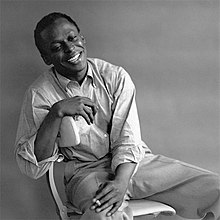Piano Sheets > Miles Davis Sheet Music > Blue In Green (ver. 2) Piano Sheet
Blue In Green (ver. 2) by Miles Davis - Piano Sheets and Free Sheet Music

About the Song
Other avaliable versions of this music sheet: Version 1 Version 2
"Blue in Green" is the third track on Miles Davis' 1959 album, Kind of Blue. One of two ballads on the LP (the other being "Flamenco Sketches"), "Blue in Green"'s melody is very modal, incorporating the presence of the dorian, mixolydian, and lydian modes. The first measure is a G minor chord with an added natural 13 (Gm13), which contains an F natural but the modality of the piece is already evident as the opening note of the melody is an E natural, which is the leading tone of the F major scale. The natural 13 of the chord is E natural.
It has long been speculated that pianist Bill Evans wrote "Blue in Green"[1], even though the LP and most jazz fakebooks credit Davis only with its composition. In his autobiography, Davis maintains that he alone composed the songs on Kind of Blue. The version on Evans' trio album Portrait in Jazz, recorded in 1959, credits the tune to 'Davis-Evans'. Earl.
Download this sheet!
About the Artist

Random article
Piano notes and music reading No language is easy to learn except for our mother tongue. Mother tongue is a language which we start learning as soon as we are conceived. But learning some other language can be difficult if you are really not into it. Piano Notes are written in a completely different language. Agreed that the characters in the piano notes are very artistic and beautiful but they are equally strange to beginners and newcomers. But here is one interesting fact. Learning music reading from a piano notes music sheet is not a very difficult task. Actually it is much easier than learning a foreign Asian language like Chinese. Memorization and repetition are the two main ingredients for success in mastering the language of piano notes. So realistically speaking, once you are done reading the basics, all you have to do is practice the language as much as you can. To say in a very classical tone, practice till each and every note starts running through your veins. (More...)
